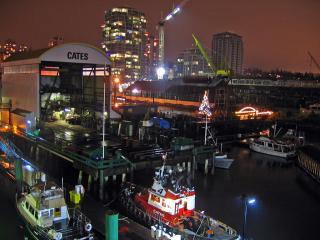For a country using 83% coal to power an economy that produces 25.9 tonnes of carbon dioxide equivalent per person, Australia’s Innamincka desert could prove a blessing. This is not because of the sunshine hitting it, but because of the way geothermal energy has suffused the granite under it.
Initial tests have found that the granite is at approximately 250˚C, meaning that each cubic kilometre can yield as much energy as 40 million barrels of oil. If it proves viable to use this heat to boil water and drive turbines, the share of Australian power derived from renewables could increase considerably. According to Emeritus Professor John Veevers of Macquarie University’s Department of Earth and Planetary Sciences, the rocks could “supply, without emissions, the baseload electrical power at current levels of all consumers in Australia for 70 years.”
Naturally, it is not sufficient to just have hot stones within a drillable distance. It will have to be economical to construct the power generation equipment. There will be a need for water to use as a heat carrier. Finally, it will be necessary to build transmission capacity to link new facilities with Australian cities.
In a sense, a geological formation like this is like the oil sands in reverse. Both exist in large countries with economies that depend to a considerable degree on primary commodities. Likewise, both exist in states with shockingly high per-capita greenhouse gas emissions. There are questions about commercial viability and water usage of both projects, but the broader issue with Innamincka is how many megatonnes of carbon dioxide can be kept out of the atmosphere, rather than how much will be produced through a bituminous bonanza.


According to Emeritus Professor John Veevers of Macquarie University’s Department of Earth and Planetary Sciences, the rocks could “supply, without emissions, the baseload electrical power at current levels of all consumers in Australia for 70 years.”
Does this mean that, after seventy years, the heat will run out? Is this actually a renewable resource, or just a stock of energy to be tapped?
“The odd thing about the granite is that it has an unusually large endowment of radioactive elements in it, like uranium, thorium, and potassium, and they decay radioactively on the timescale of a billion years or so, and in doing so they put out a lot of heat,” explains Veevers. “So this granite today is around 250 degrees Celsius down there, double what a normal granite would be. It’s kept hot by the overlying Cooper Basin and then the Great Artesian Basin on top of that – four kilometres of sedimentary rock which acts like a blanket…
The other interesting thing about the granite is that it has natural horizontal cracks, which can be widened by pumping water into them at great pressure. Because of the natural sideways force or shear stress in that part of Australia, when the flakes of granite settle after the pressure is reduced, the rock on either side of the crack doesn’t mate perfectly. As a result the permeability of the rock – its ability to transmit water – is increased a thousandfold.
The Innamincka geothermal resource extends over 1000 square kilometres. With one hole per square kilometre, and 40 holes per year, the resource would be fully developed in 25 years. The amount of energy it is estimated to be able to produce before the granite temperature is reduced to an uneconomic 150 degrees Celsius is equivalent to 50 billion barrels of oil, or one-fifth the oil reserves of Saudi Arabia, or 12 times the gas reserves of the North West Shelf.”
Not really renewable, then. An unusual form of nuclear power.
Still, emissions free and potentially very useful.
Canada’s Suncor plans C$20 bln oil sands expansion
CALGARY, Alberta, Jan 30 (Reuters) – Suncor Energy Inc (SU.TO: Quote, Profile, Research) said on Wednesday it will spend C$20.6 billion ($20.8 billion) on an expansion scheme that will make it the biggest producer in the oil sands of northern Alberta.
Suncor’s board of directors gave the go-ahead for the Voyageur project, a 200,000 barrel-a-day expansion of the company’s already massive oil sands operations near Fort McMurray, Alberta. Voyageur will boost output to 550,000 barrels a day when complete in 2012.
The project is the latest of more than C$100 billion worth of plans to tap the oil sands to feed demand from U.S. refiners for Canadian oil.
Production from the northern Alberta oil sands, the largest oil reserves outside of the Middle East, is expected to nearly triple to 3 million barrels a day by 2015.